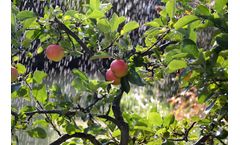Refine by
Crop Treatment Articles & Analysis
19 articles found
It has never been simpler to make the dream come true, thanks to modern innovative technologies such as the garden drip irrigation system and organic options such as Puroxi (OB) Water Treatment for crops. These two tools complement each other to make your garden a lush, environmentally friendly ...
Naturally, this is a huge trigger for productive crops and maximum yield. New methods of seed treatment are therefore being explored. The ultimate goal is to maximize crop yield and quality, while minimizing negative impacts. As to why the treatment is preferably applied directly onto the seeds, the answer is crystal clear: ...
BiOWiSH Technologies, Inc. engaged North Dakota State University as a third party Contract Research Organization (CRO) to conduct a study to determine the effects of BiOWiSH Crop Liquid coated fertilizer on potato production in eastern North Dakota ...
PREAMBLE: Melons are members of the cucurbit family, which includes pumpkins, zucchini, cucumbers and squash, all of which have similar growth requirements. Melon quality is directly related to the sugar content of the fruit. High sugar content is achieved by avoiding all stress during the growing season. Stress comes from foliar diseases, insect pests, weeds, poor nutrition, and excesses or ...
In the greenhouse of Härkälä nursery, the colorization lighting with Netled Overhead Hybridluminaires is installed in the production line of Salanova lettuce. First crop with colorization lighting treatment was harvested at the end of February. The colorization was very successful and the effect of lighting treatment clearly ...
These lettuce seedlings were transplanted to the growing benches on 15 July and treatment commenced on 23 July. This crop has been an inspiration to us as we have watched the plants grow evenly and with magnificent vigour, rich colour and shine. ...
Its effects on ammonia (NH3) volatilization were not clear, especially on farmland scale with crop rotations. In this study, on-farm experiments at the Jiaxing (JX) and Yuhang (YH) sites in Taihu Lake Basin, China were conducted to evaluate the effect of DMPP application on mineral nitrogen (N) (NH4–N and NO3–N) leaching and NH3 volatilization losses in a rice–rapeseed ...
Cover crops in direct seeding mulch-based cropping (DMC) systems can be an effective tool to optimize N management for crop production in the Brazilian cerrados. ...
Our objective was to evaluate plant, animal, and soil responses when integrating winter cover crop forages into no-till corn (Zea mays L.) silage production. Three cover crop treatments were established no-till after corn silage in September 2006 and 2007 at Columbus, OH: annual ryegrass (Lolium multiflorum L.), a mixture of winter rye (Secale ...
Cover crops in direct seeding mulch-based cropping (DMC) systems can be an effective tool to optimize N management for crop production in the Brazilian cerrados. ...
Our objective was to determine the effect of soybean seed inoculation with Bradyrhizobium spp. and fertilizer N application rate on soybean productivity planted 1 and 2 yr after conversion to row crop production. Soybean followed the pasture the first year and followed an intervening corn crop the second year. Treatments consisted of a factorial ...
Cover/companion crop treatments generally had more large macroaggregates, greater aggregate mean-weight diameter, and larger quantities of total microbial biomass and most lipid/microbial groups than no-cover treatments. Manure and starter fertilizer additions resulted in significant cover/companion crop ...
Cover crop treatments included cowpea [Vigna unguiculata (L.) Walp.] incorporated (CPI), cowpea used as mulch (CPM), sudangrass [Sorghum bicolor (L.) Moench] incorporated (SGI), and a bare ground control (BG). The management system treatments included conventional (CON), integrated crop management (ICM), and organic (ORG). ...
The objective of this study was to quantify interspecific competition of self-seeded winter cereal cover crops growing concurrently with corn. Total weed density responded more to environment than cover crop treatment, with 12.0 and 2.2 weeds m–2 in 2005 and 2006. Averaged across species, cover crop treatments ...
Nitrogen fertilization effects on irrigated corn (Zea mays L.) and malting barley (Hordeum distichon L.) yields in a corn-barley rotation were evaluated for 6 yr on a clay loam soil to determine the viability of using a NT system and N needs for optimum crop yield. Six N treatments were established with N rates varying from 0 to 224 kg N ha–1 for corn and 0 to ...
Many environmental benefits accrue from reducing tillage and increasing crop diversity; however, economic factors often encourage the continued use of intensive tillage and specialized crop production. ...
This paper evaluates the results of a study highlighting the effect of rigid scheduling on crop water use and soil water extraction patterns, crop coefficients, crop response functions and water-use efficiency (WUE). The cumulative Penman potential evapotranspiration (Etp) at the end of the season reached around 400 mm and the total depth of ...
Merr.] residues, increase infiltration, reduce both rill and interrill erosion, scavenge excess nutrients from the soil, and are easily obtained and inexpensive compared to other cover crop options. The use of cereal grain cover crops in fields where manure application occurs should increase nitrogen (N) recovery and cycling for use in subsequent ...
Organophosphoric pesticides are widely used for crop and fruit tree treatment, but their disposal causes serious environmental problems. ...









